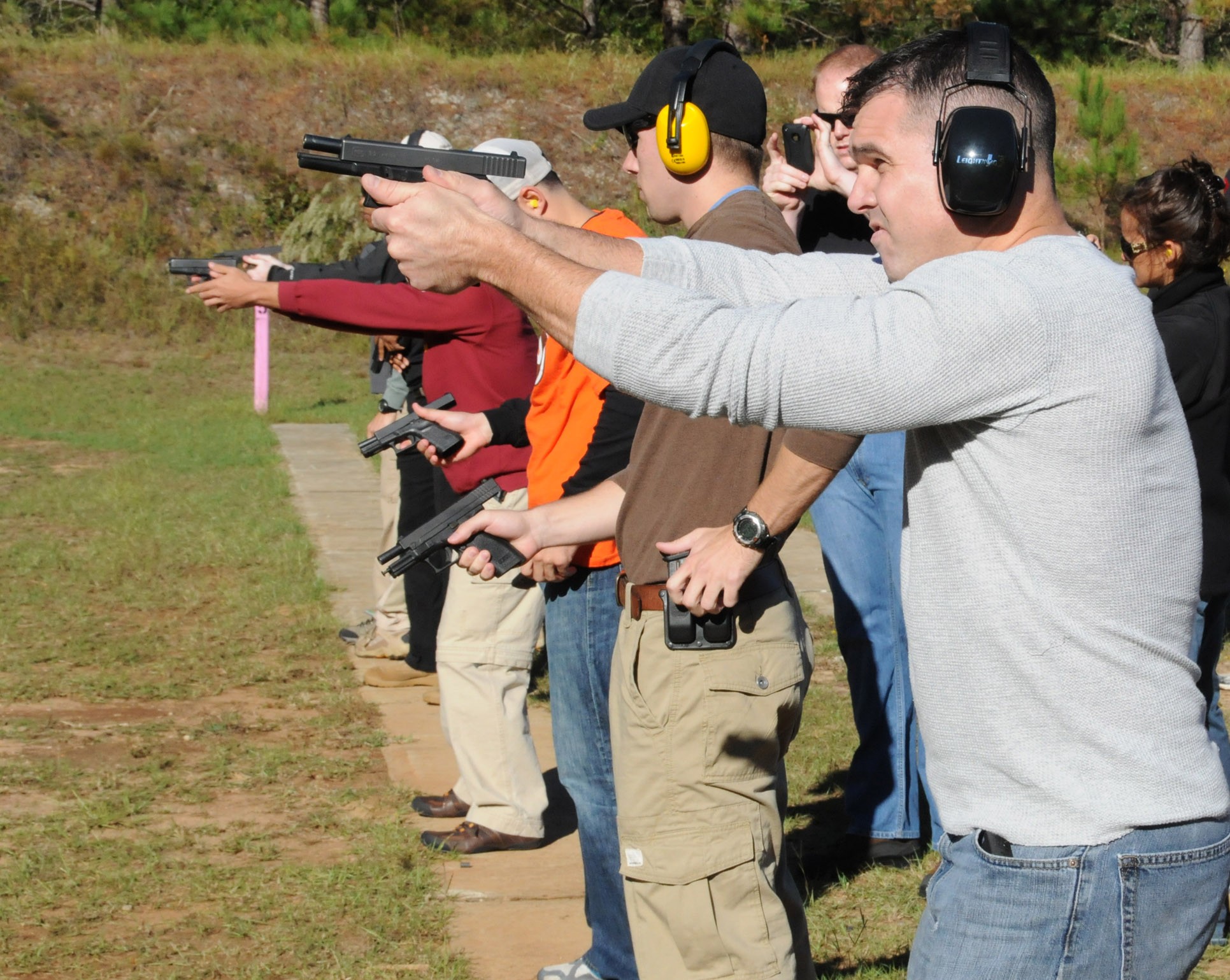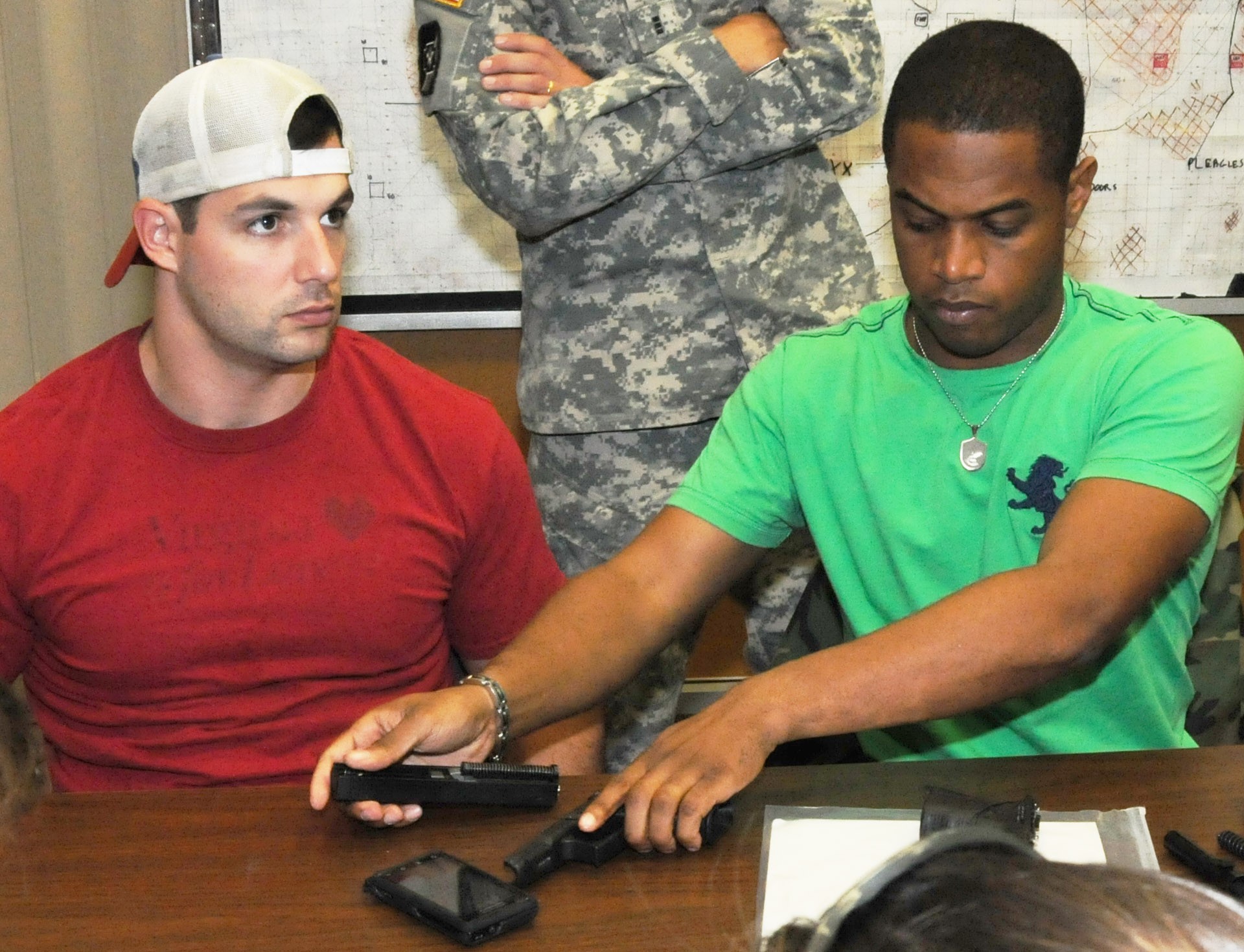FORT RUCKER, Ala. -- Fifteen members of the Aviation Captains Career Course, Class 10-04, gained knowledge of one of the most widely used pistols in the world and learned more about firing the weapons Oct. 28 and 29.
Students learned about the Glock series of pistols and received the National Rifle Association's Combat Pistol course from certified Glock armorer and NRA Senior Instructor Mike Christianson.
It is important students learn about the Glock pistols because that's the system the Iraqi security forces, Afghan national army, Afghan national police and other coalition partners field and use, said Maj. John Fernandez, AVC3 small group instructor.
"It is an 'outside' the box initiative," Fernandez said. "It ties into an aircraft shoot down scenario. My thought was I did not want the first time they see or even have the weapon is on a bad day and then things get even worse by failing to work with what they have. This weapon is on the current battlefield and there is a possibility that they will see it and - even though remote - use it."
Students learned the history of the Glock and reviewed the types of models from the standard 9mm to the subcompact .45mm pistols. Currently the Glock is the standard for police departments throughout the U.S., according to Christianson.
The Glock is a recoil-operated, double-action, locked-breach pistol. It has a safe action system with three built in safeties. A Glock will not accidentally go off.
"As long as your finger is not on the trigger, the pistol won't fire. Therefore, keep your finger out of the trigger and the gun won't go off," Christianson said.
Because the Army fields the Berretta 9mm, there was the obvious comparison. The Glock has 33-39 parts whereas the Berretta has 57 parts.
Many of the students enjoyed learning about the Glock weapon system.
"I didn't know anything about Glocks, I was very impressed with the information they had to put out," said Capt. Mike Linnington.
During the NRA Combat Pistol classroom instruction, students learned the basic knowledge, skills and attitude necessary for owning and using a pistol safely.
The Army has several official long-range weapons courses, but no official pistol course, said Christianson.
The NRA Combat Pistol Course is only taught to military and civil authorities. It's goal is to teach combat accuracy.
The captains learned safe gun handling, reasons to own a pistol, types of guns, the parts of guns, the difference between single- and double-action revolvers and semi-automatic pistols.
Christianson demonstrated the most effective way to use a pistol in a combat situation.
"It all comes down to sight alignment, stance and trigger pull," he said. "Whether you have a $200 gun or a $1,000 gun, you're not going to shoot any straighter as long as you follow these principles."
The students appreciated the hands-on training.
"The NRA course really goes over the basics which we as (Soldiers) in our community sometimes feel we can skip because of what we do as our profession," Linnington said. "These basics you really can't skip."
"No matter what level you are, any course is beneficial," said Capt. Chris Batchelor. "It takes a lot of oversight from leaders, both noncommissioned officers and officers, to teach Soldiers to be smart about shooting. Teaching them to be mature and make mature decisions."
Christianson said he enjoyed training Soldiers.
"It's important to have these classes here because this post offers no training programs, but any Soldier can purchase a weapon at the post exchange," he said.
Christianson added that Soldiers choosing to purchase a firearm have 72 hours to register it with the provost marshal.
All personal weapons on post must be registered with the Directorate of Public Safety using a DPS 818 form. Prior to registering or purchasing a weapon on post, Soldiers must have permission from unit commanders. Any Soldier purchasing a weapon from the post exchange must fill out a DPS 818 form at the time of purchase.
Weapons and ammunition cannot be stored in a vehicle. The only reason to have a weapon in the vehicle is travelling to a hunting event or from Point A to Point B. Where Point A is your residence and Point B is out the gate. Never drive through the gate with a loaded weapon.
For more information on personally owned weapons on post, see U.S. Army Aviation Center of Excellence Regulation 600-1.




Social Sharing